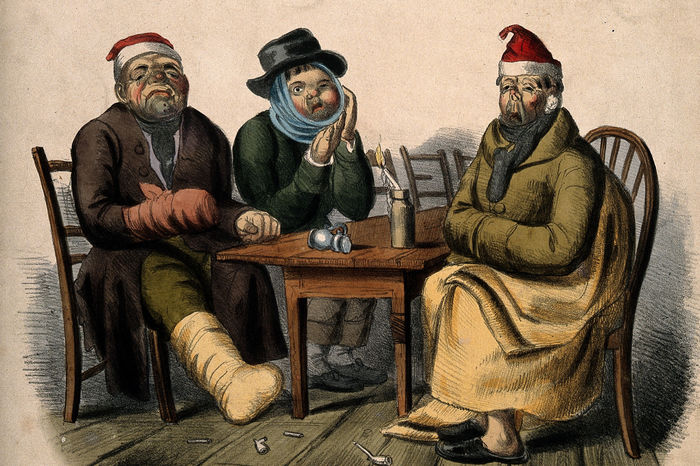Why some like it hot: the science behind spice tolerance
Yi Sum Yue explains why it’s not just genetics that has some of us feeling the burn more than others

There I was, sitting in a restaurant, unable to eat another bite of the Sze Chuan food we had ordered. In one bowl was a fish bathed in spices, while the other contained a mountain of dry red chillies with pieces of fried chicken peeking out. As I sat there watching my Wasian friend devouring her food, I, a Southeast Asian, was embarrassed at my performance. I have always taken pride in my spice tolerance, and although I hate to adhere to the stereotype, I always thought I could tolerate more due to my genetics. So, what really affects our spice tolerance, and do genetics matter?
Before we dive into the world of spice, it is important to understand what makes food ‘spicy’. Different types of spice sensations (burning, numbing, sharp, warm etc.) actually stem from different sources and chemicals. For instance, chilli peppers produce a burning sensation, which is caused by capsaicin, while hydroxy-alpha sanshool is found in Sze Chuan peppercorns. Each chemical will target different protein receptors in nerve fibres in the tongue, which induce different sensations of pain, along with the other attractive features of salivation, runny nose, and crying. For the purposes of this article, I will focus on tolerance to capsaicin and chilli peppers.
“Genetics probably account for 15-58% of variation in the perceived pleasantness of spicy foods”
Capsaicin targets the TRPV1 receptor on pain-sensing neurons. Small genetic differences (called mutations) between people can lead to changes in the sensitivity of this receptor to capsaicin. But before we discuss my possible lack of mutations in the TRPV1 gene, it’s important to understand how the receptor works. Capsaicin binds to a specific part of the TRPV1 receptor to activate these nerves. A change in one of the amino acids in this pocket might decrease sensitivity to capsaicin, so a lower concentration of capsaicin (or number of jalapeño poppers) would be required to bring a response.
So, how much does all of this matter? Well, according to Törnwall et. al, genetics probably account for 15-58% of variation in the perceived pleasantness of spicy foods. The other 42-85% may be down to a number of other factors.
A University of Pennsylvania study explored how culture and social norms can impact tolerance to chilli. Interviews, measurements, and observations were carried out on 125 subjects in a traditional Zapotec village in Mexico, where all residents over 6 years old eat all three meals with a chilli pepper of some form. 56 subjects from America, where the mean ingestion of chilli is 2.62 times per week, were given the same tests and observations. The research concluded that all participants felt the same burning sensation, but chilli eaters showed a "clear hedonic shift," meaning they liked the burning sensation of hot food, and had formed stronger associations between pain and pleasure.
The enjoyment of eating chilli, along with riding roller coasters and watching horror films, can all be considered thrill-seeking activities. In certain cultures, chilli pepper consumption is associated with strength, being daring, and having masculine personality traits.
“Frequent chilli eaters also get ‘used’ to the sensation of spice, which is caused by receptor desensitisation”
Furthermore, age and experience can play a major role in spice tolerance. Younger individuals may find spicy foods more intense due to heightened sensory sensitivity. On the other hand, older individuals with prolonged exposure may have increased insensitivity to capsaicin. The loss of responsiveness may be explained by the death of pain receptors after long term exposure.
It is also true that frequent chilli eaters also get used to the sensation of spice, which is caused by receptor desensitisation, where the prolonged exposure to capsaicin prevents TRPV1 receptors from producing their normal effect. If you regularly stuff your mouth with chillies, your nerves will internalise your receptors, which may then be degraded. This leads to fewer TRPV1 receptors, making you less sensitive to capsaicin.
In conclusion, spice tolerance is most definitely affected by genetics, but that is just the tip of the spiceberg. Other factors such as cultural and social norms, age, and exposure all shape your tolerance to spice, and it is important to understand that all these factors are interlinked and will influence one another. Personally, my takeaway from this is to keep eating the spicy stuff, stay away from bland British food, and build up my tolerance.
Want to share your thoughts on this article? Send us a letter to letters@varsity.co.uk or by using this form.
 Features / Should I stay or should I go? Cambridge students and alumni reflect on how their memories stay with them15 December 2025
Features / Should I stay or should I go? Cambridge students and alumni reflect on how their memories stay with them15 December 2025 News / Cambridge study finds students learn better with notes than AI13 December 2025
News / Cambridge study finds students learn better with notes than AI13 December 2025 News / Uni Scout and Guide Club affirms trans inclusion 12 December 2025
News / Uni Scout and Guide Club affirms trans inclusion 12 December 2025 Comment / The magic of an eight-week term15 December 2025
Comment / The magic of an eight-week term15 December 2025 News / News In Brief: Michaelmas marriages, monogamous mammals, and messaging manipulation15 December 2025
News / News In Brief: Michaelmas marriages, monogamous mammals, and messaging manipulation15 December 2025










